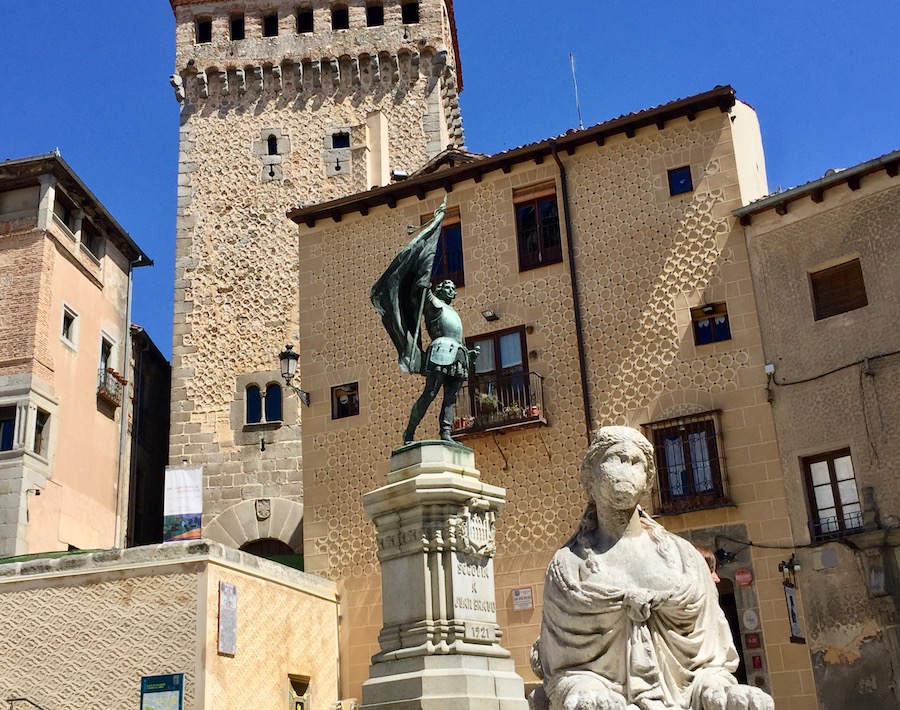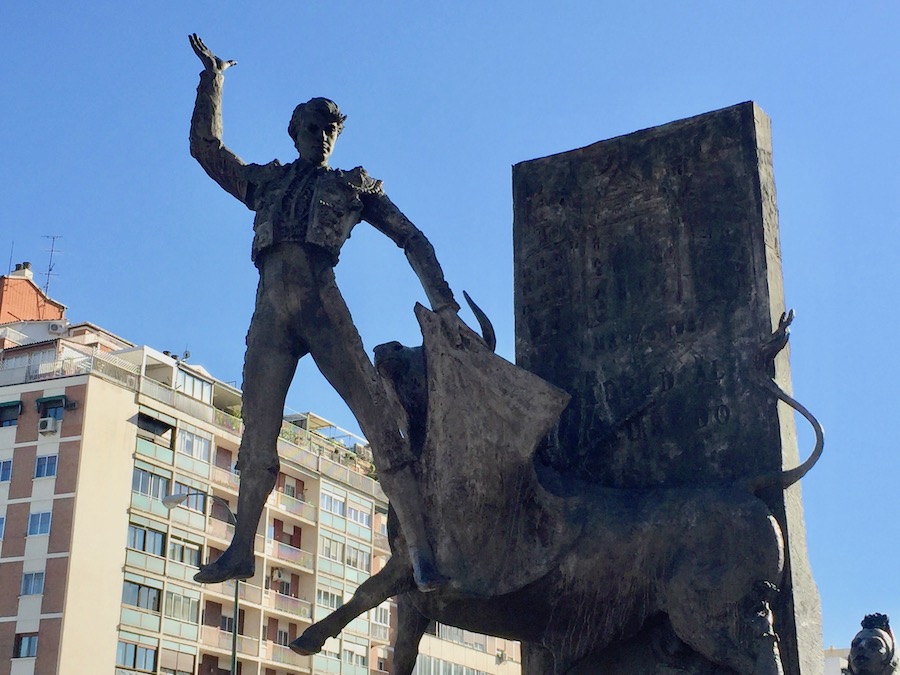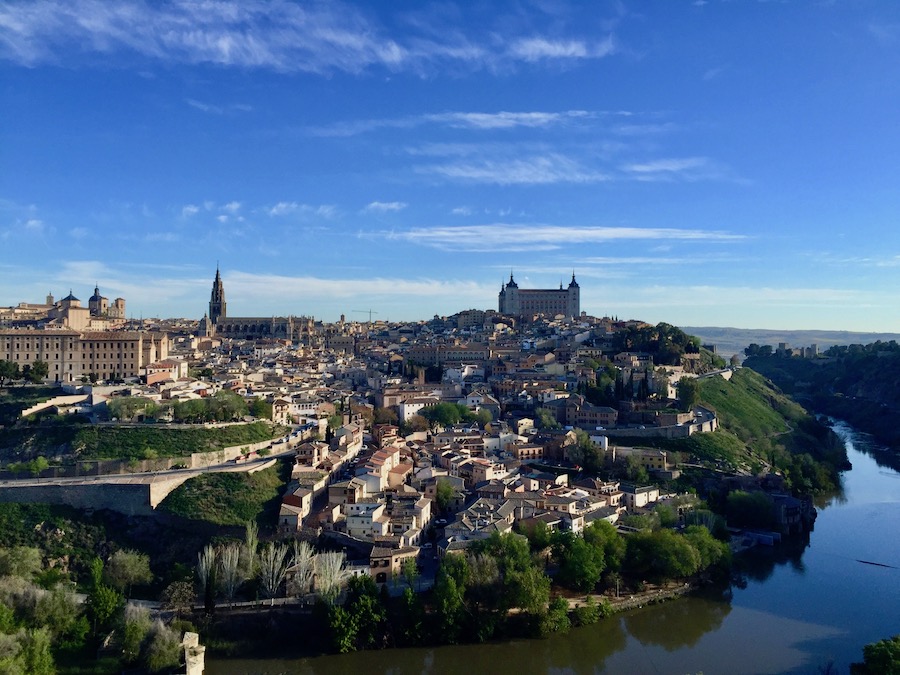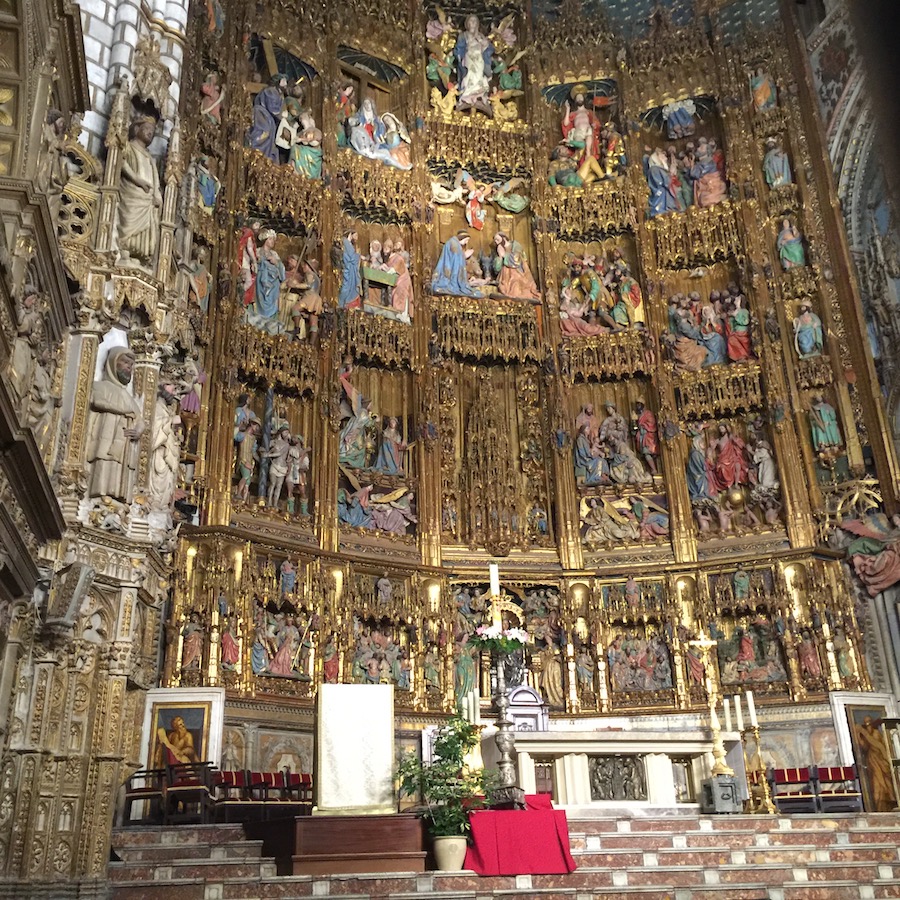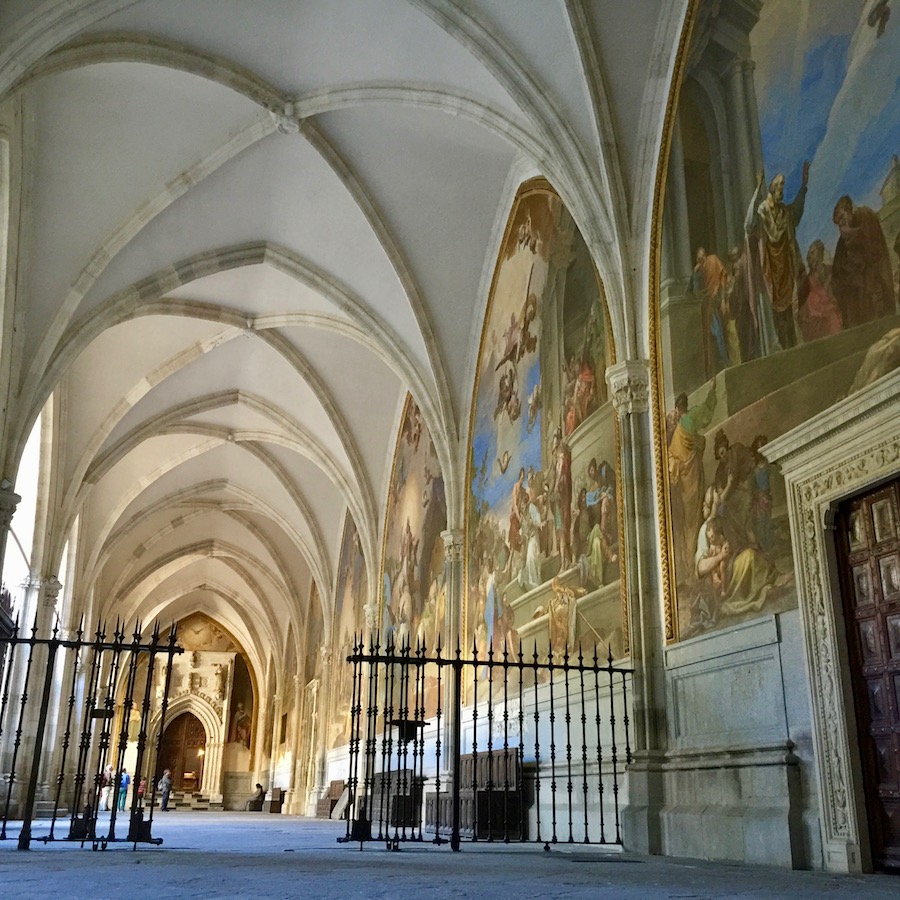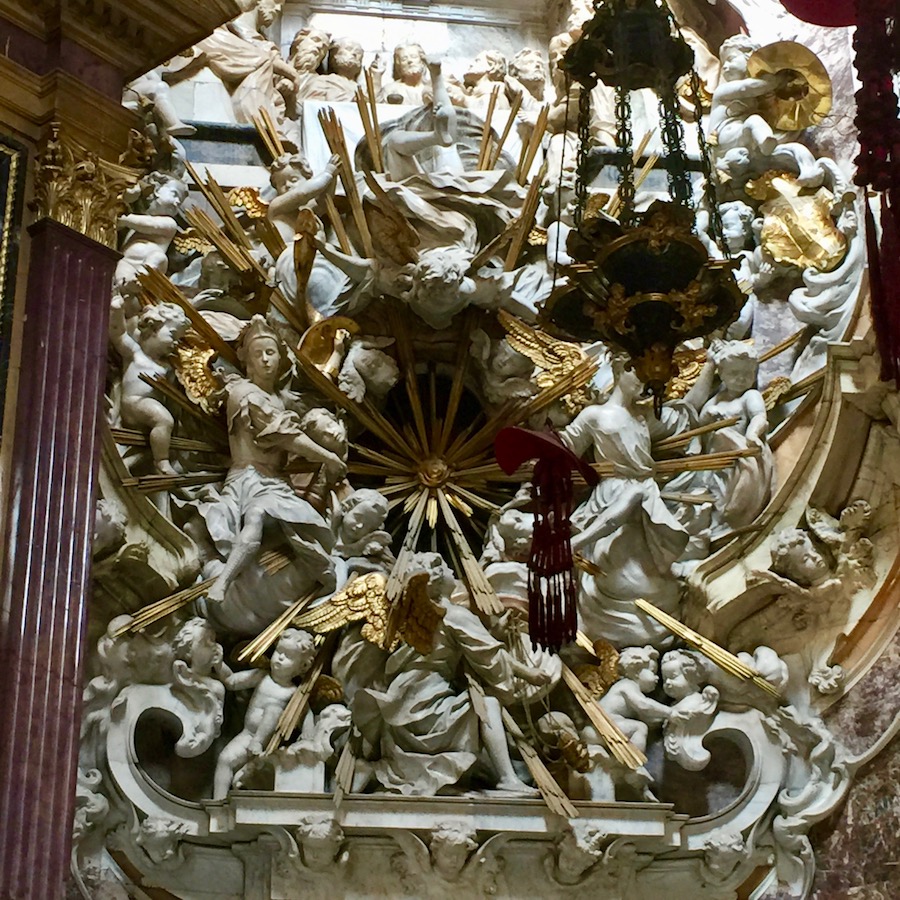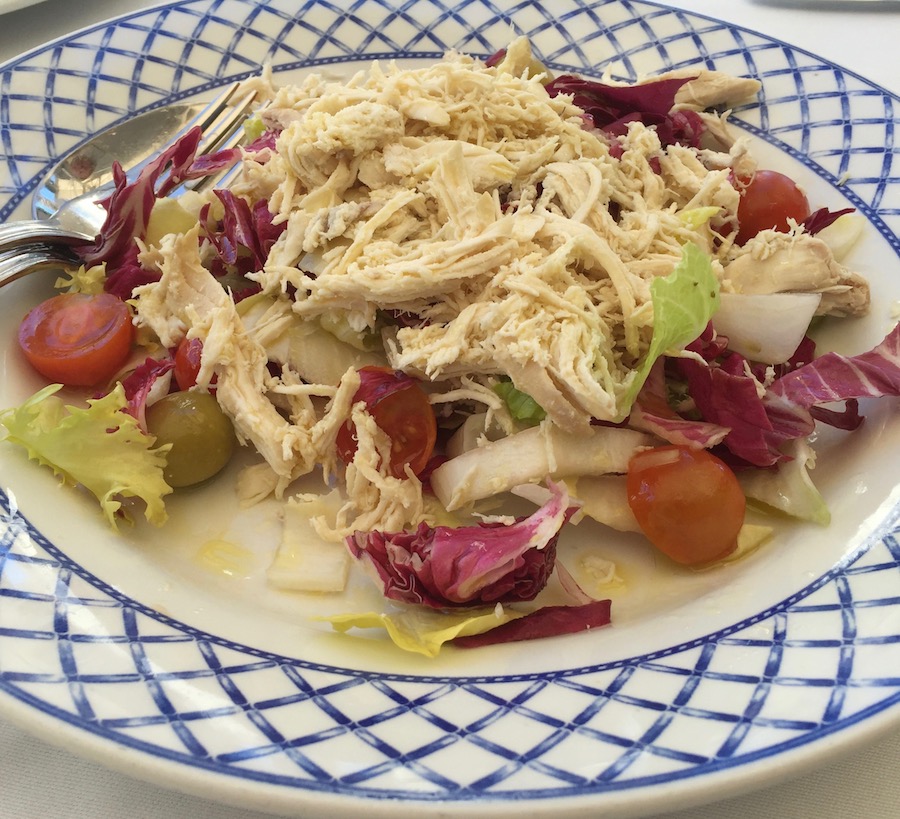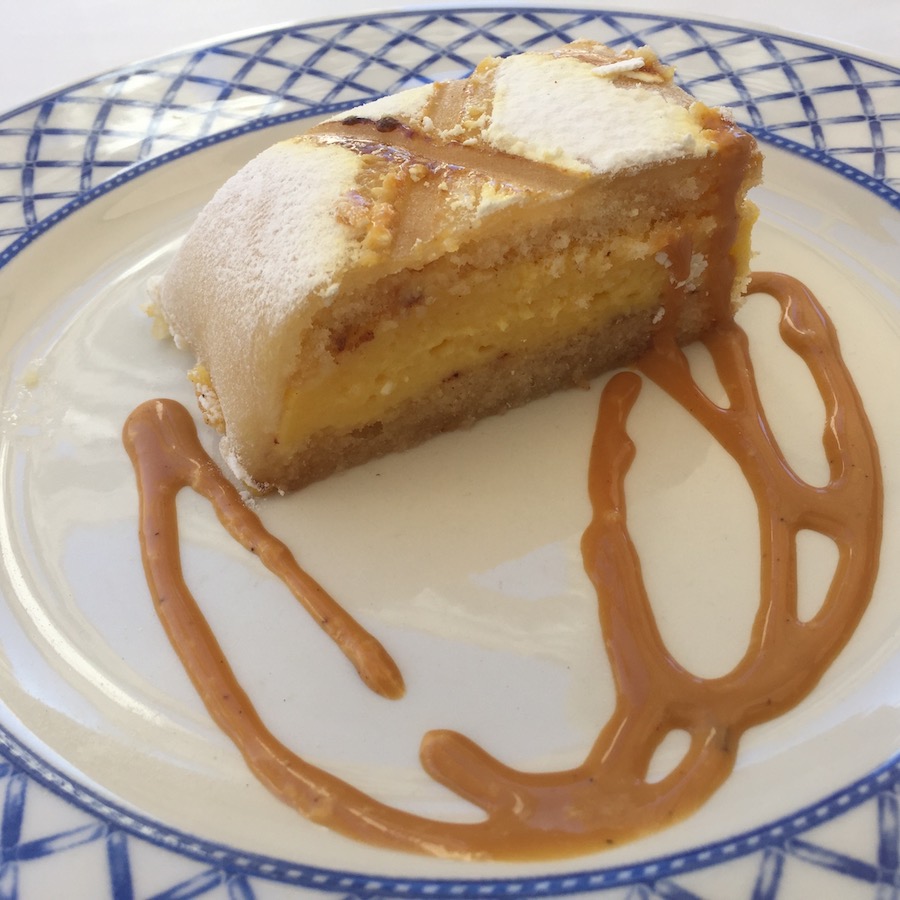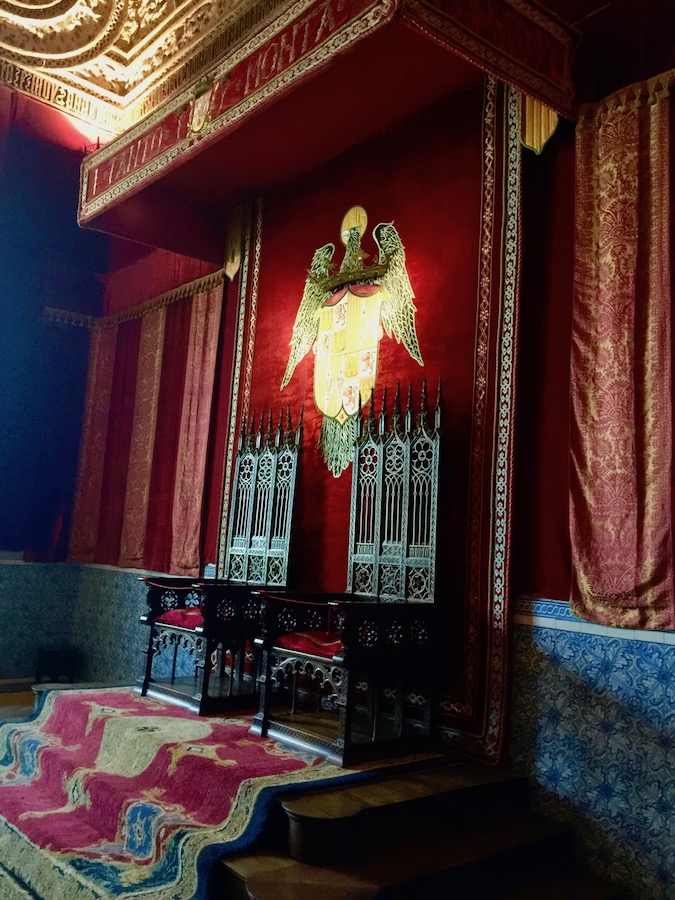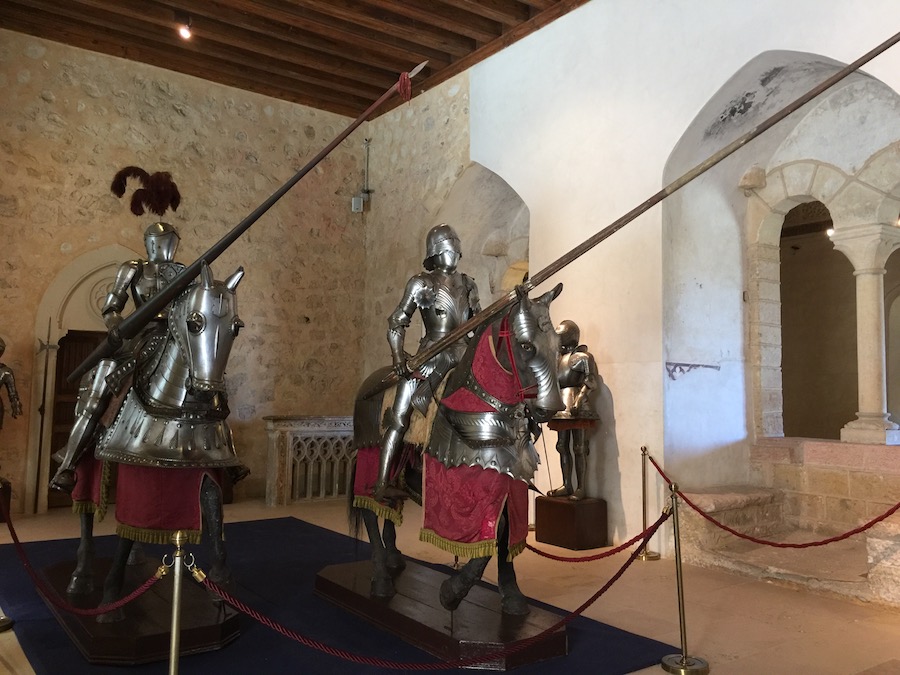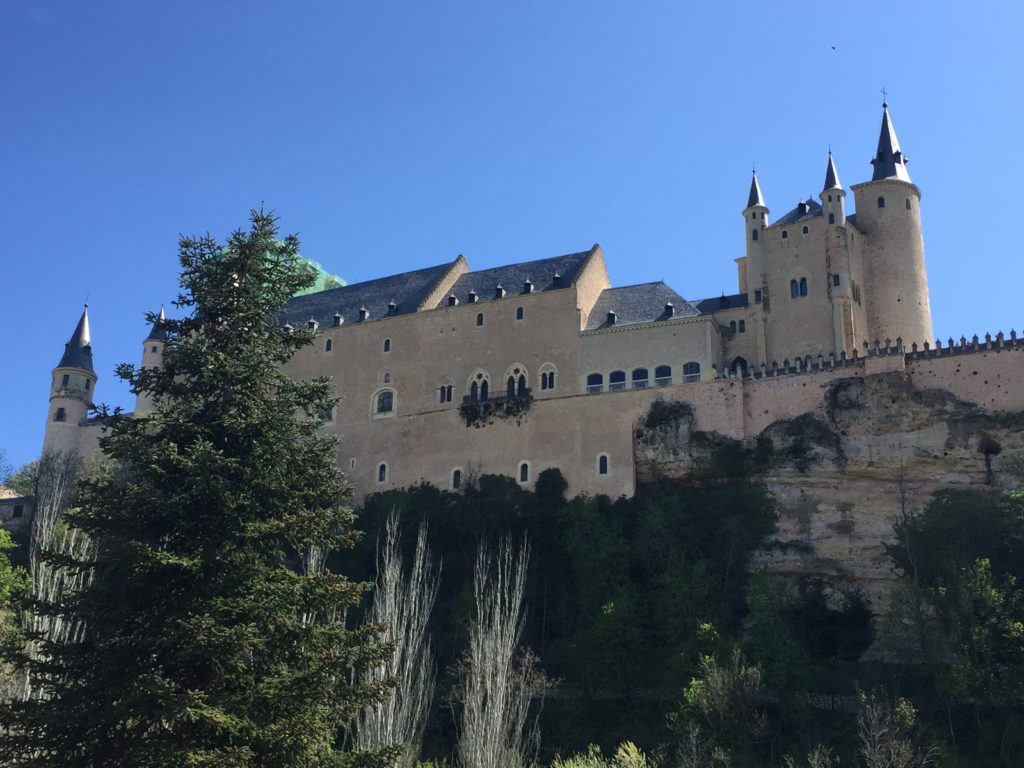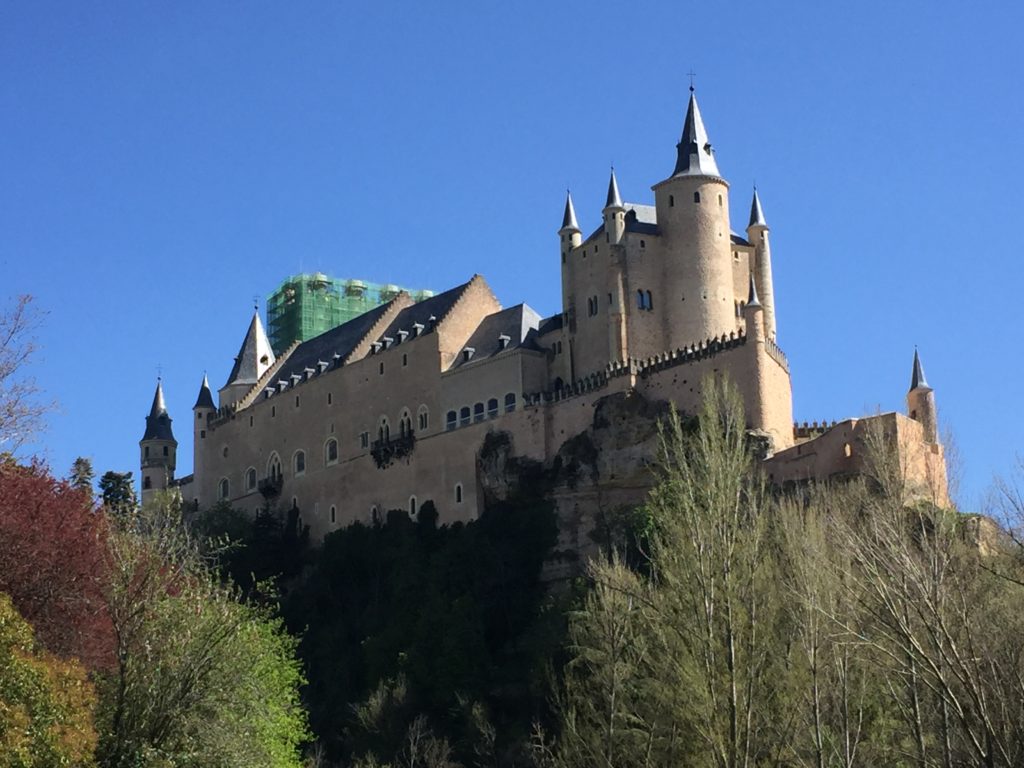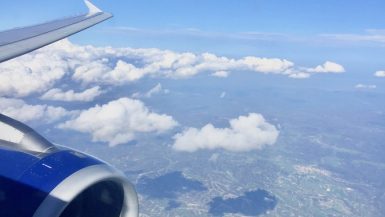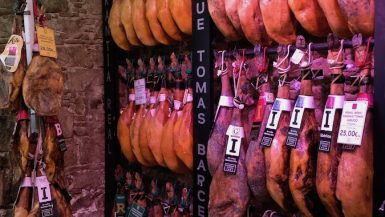April 25, 2016
When planning the trip, we wanted to make a side trip from Madrid. We thought about going to Granada, which everyone raves about, but it’s just one of those places you can’t get to easily on a day-trip. We were looking at Toledo and Segovia, but couldn’t decide between the two. So, why not do both. I looked into a trip via train, but the times didn’t sync up. A bus tour sounded like a good option, and we found one that combined both cities from Viator (using Amigo Tours Spain).
We were up early because we had to meet the bus at 7:45 a.m. and since it was in an area of the city we hadn’t yet explored, we didn’t quite know where we were going. Although the directions said to meet at Plaza Las Ventas, the taxi driver dropped us off at Plaza de Toros (the location of the stadium where the bullfights take place).
A little bit of panic arose until I realized the two plazas were side-by-side. Since we were standing in the square looking this way and that holding our confirmation papers, we were quickly spotted by the tour guide Helena (who ultimately turned out not to be the best guide).
I was under the impression when we booked that our tour was a small group which would go by van, but it turned out to be a large tour bus with about 25 of us. And, while it was stated that it was an English speaking tour, there were several Spanish speakers, so the guide had to say everything twice – once in English and once in Spanish. The English speakers were from the US, England, and Japan. The Spanish speakers were from Spain and Argentina.
Everyone got along quite well, except as the day progressed, the Argentinians did nothing to enamor themselves to the rest of the group. At each stop, they were late getting back to the group or were wandering from the group, which made us wait for someone to find them again and, in turn, made us lose free time at a few stops. Despite being told several times they needed to stay with the group and that it wasn’t fair to anyone else that their behavior was affecting the tour, they continued to wander and be late. How rude!!!
We boarded the bus and were off to Toledo, situated about an hour south of Madrid. Toledo is the former capital of Spain where Jews, Moors, and Christians lived in harmony for 800 years. If only we could take a lesson today from that cooperation. However, the mix of those cultures combined to make the city very interesting and diverse. The drive up to Toledo is stunning as the town perches on a hilltop surrounded on three sides by the Tajo River. The bus stopped on the other side of the river so we could get out and take photos and then dropped us off on the city side.
While preparing for the trip, I read that “everything in Toledo is uphill.” While funny, it is a completely true statement, or so it seemed.

Helena started off by giving us a quick history of Toledo, then turned around with a “follow me” and started through the narrow streets up the hill – at a fair clip. Actually, she kind of left the group in the dust. We hurried as best we could to keep up. And then she would stop suddenly, give the members of the group that had caught up to her some tidbit of information, and then she would be off again. With her pace, people wandering off and some people walking at a slower pace, it was difficult to tell we were a tour group. When we arrived at the Plaza de Zocodover, the main square, she advised we had an hour of free time and she suggested we tour the Cathedral, which was down the street we had come up. And then she was gone.
Since Rick Steves’ book said that the Cathedral was divine, Steven and I decided to spend our hour there. So down we walked to the entrance Helena had pointed out. Unfortunately, it wasn’t the tourist entrance, just the one to get into the chapel for mass. So we walked all the way around the Cathedral (which is huge) to stand in line for tickets and the audioguide (which took 15 minutes). 30 minutes inside the Cathedral were not enough (that’s ok, we’ll come back someday). It has an unbelievable alter piece that rivals the one in the Mezquita, just a bit smaller. The intricate carvings of gold on wood are beautiful but gaudy at the same time. But it was the alter associated with the Transparente that took my breath away. There were playful angels and cherubs, sunbursts, the baby Jesus, the last supper and a big skylight all done in marble, stone, and gold in the Baroque style.
We could have pulled up a pew and stared at it for hours, but we couldn’t because our time was waning and we needed to use the restroom (aseo) before getting back on the bus. (Another issue with our guide, when asked by someone when we arrived in Toledo if there were available restrooms, she merely said “find a cafe, they might let you go.”)
We made it back to the main square, meeting up with the rest of the group – minus the Argentines. So we waited. All was not lost, as we had a great chat with two of our group – Mark and David from San Francisco. They are world travelers and quite fun – we ended up going around with them for most of the day. Additionally, it turns out that their next destination is Marrakech and they are on our flight on Wednesday. Kismet.
The Argentines finally showed up, and we started back down the hill to meet the bus. Our time in Toledo was far too short, and there was much more to see. We will need to come back, but not on a bus tour. Our next destination was Segovia, a two-hour drive from Toledo. As we drove closer, we could see snow on the mountains in the distance.

Our bus drove into town and left us at the base of one of the famous sites – the Roman aqueduct. The entire aqueduct is 9 miles long to the Frio River, but much of it is underground. In the center of Segovia, there is about 2500 feet visible, 100 feet high at the highest point. It is an impressive sight. Standing below the aqueduct, it is hard to believe it was constructed 2000 years ago without cranes and heavy equipment. Simply unbelievable.
Right off the bat, we were given an hour of free time during which we could get lunch. I’d already read up on lunch spots, so we chose the famous Meson de Candido. The restaurant is famous for its cochinillo asado – roast suckling pig, and we were feeling adventurous (when in Rome and all that). We put our order in for one portion and a salad. We crossed our fingers that we didn’t get anything weird like the pig snout we saw on another patron’s table.
Our waitress divided our portion onto two plates. At first glance, they didn’t look odd – then we took a closer look. In the middle of my piggy portion was a crispy ear; in the middle of Steven’s piggy portion was a hoof. Hmmm. Well, we were being adventurous, so we dug in, cutting into the crispy skin and the succulent meat below. We did eat around the ear and hoof, but the remainder was really good.
We had a few minutes left of our lunch hour, so we shared a piece of ponche segoviano, a local dessert with a thin cake base, a creme filling, and an almond and honey marzipan top. It was “lick your plate” yummy.
After lunch, we joined the rest of our group – again, minus the Argentinians. We waited 10 minutes for them and then started up the hill. Part way up, they caught up without apology. Our tour took us past the Cathedral, a lovely example of the Flamboyant Gothic style with Renaissance domes on top. Unfortunately, since we were already behind schedule (hmm, I wonder why?!) there was no time to peak in.
Our guide sped off in front of the group, and we scampered off after her. Our last stop was the Alcazar, a fortress, a palace, a prison and, at one time, an artillery school. The castle burned in 1862 and since its rebuild, it’s a museum. It’s still under renovation. While the Alcazar is magnificent inside and out, it is known primarily as one of the castles giving rise to the concept of Disney’s Sleeping Beauty’s Castle.
After our allotted 30 minutes in the Alcazar (not enough time), we joined the rest of the group, except… you got it, the Argentines. We waited and waited and waited. Finally, the woman showed up, but not her husband. Helena said we needed to go because our bus would be waiting, so we left, minus one person. Down the hill we walked, and walked, and walked. We joked that we weren’t meeting the bus but that we were actually walking back to Madrid. Finally, we got to the bottom of the hill to a wide grassy area. Looking back, we had the best view of the castle up above. It was fantastic.
Many photographs later, we boarded the bus only to find that not only had the Argentinian man not been found, but somewhere down the hill, we lost the woman again. Are you kidding me!?! Helena made the decision to leave them. To this moment, we have no idea where they are or whether they ever made it out of Segovia.

